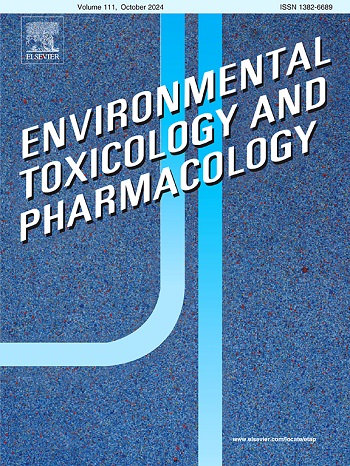Synergistic effects of imidacloprid on the Perionyx excavatus: Biomarker responses and gene expression profiles
IF 4.2
3区 环境科学与生态学
Q2 ENVIRONMENTAL SCIENCES
引用次数: 0
Abstract
Imidacloprid, a widely used neonicotinoid insecticide, negatively impacts soil biota and harms the environment with long-term use. In this study, we aimed to evaluate the effects of imidacloprid on Perionyx excavatus, an indigenous earthworm species found in India. To evaluate the toxic effects of imidacloprid on earthworms, avoidance behavior, acute toxicity, chronic toxicity, oxidative damage, and functional gene expression patterns were measured. The LC50 value of imidacloprid with 14-day exposure was 1.64 mg kg−1 and the AC50 value for net avoidance response was 0. 23 mg kg−1 of imidacloprid at 48 h. Antioxidant and detoxifying enzymes were altered, which led to oxidative damage, lipid peroxidation, and DNA damage in earthworms. Hence, it was confirmed that imidacloprid may cause harmful effects on the biophysical homeostasis of P. excavatus, primarily through oxidative damage and altered gene expression. This present research emphasizes the possible threat of imidacloprid to native earthworms in subtropical ecosystem.
吡虫啉对孔雀石的协同作用:生物标志物反应和基因表达谱。
吡虫啉是一种广泛使用的新烟碱类杀虫剂,长期使用会对土壤生物区系产生负面影响,危害环境。在本研究中,我们旨在评价吡虫啉对印度土生蚯蚓(Perionyx excavatus)的影响。为了评价吡虫啉对蚯蚓的毒性作用,我们测量了蚯蚓的回避行为、急性毒性、慢性毒性、氧化损伤和功能基因表达模式。吡虫啉14 d LC50值为1.64mg -1,净回避反应AC50值为0。48小时注射23mg -1吡虫啉。蚯蚓体内的抗氧化和解毒酶发生改变,导致其氧化损伤、脂质过氧化和DNA损伤。由此证实,吡虫啉可能主要通过氧化损伤和基因表达改变等途径,对孔竹的生物物理稳态产生有害影响。本研究强调吡虫啉对亚热带生态系统原生蚯蚓的潜在威胁。
本文章由计算机程序翻译,如有差异,请以英文原文为准。
求助全文
约1分钟内获得全文
求助全文
来源期刊
CiteScore
7.00
自引率
4.70%
发文量
185
审稿时长
34 days
期刊介绍:
Environmental Toxicology and Pharmacology publishes the results of studies concerning toxic and pharmacological effects of (human and veterinary) drugs and of environmental contaminants in animals and man.
Areas of special interest are: molecular mechanisms of toxicity, biotransformation and toxicokinetics (including toxicokinetic modelling), molecular, biochemical and physiological mechanisms explaining differences in sensitivity between species and individuals, the characterisation of pathophysiological models and mechanisms involved in the development of effects and the identification of biological markers that can be used to study exposure and effects in man and animals.
In addition to full length papers, short communications, full-length reviews and mini-reviews, Environmental Toxicology and Pharmacology will publish in depth assessments of special problem areas. The latter publications may exceed the length of a full length paper three to fourfold. A basic requirement is that the assessments are made under the auspices of international groups of leading experts in the fields concerned. The information examined may either consist of data that were already published, or of new data that were obtained within the framework of collaborative research programmes. Provision is also made for the acceptance of minireviews on (classes of) compounds, toxicities or mechanisms, debating recent advances in rapidly developing fields that fall within the scope of the journal.

 求助内容:
求助内容: 应助结果提醒方式:
应助结果提醒方式:


